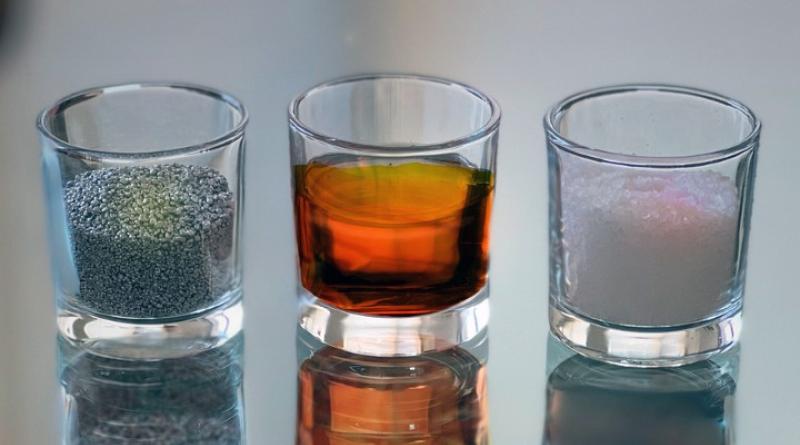MIT’s New Battery Will Change The World

It’s cheaper, faster charging, longer lasting, safer and better for the environment than anything we currently have.
The future is battery-powered. All of our next-gen and planet-saving technology, like solar power and electric vehicles (EVs), require batteries to function. But as these brilliant pieces of technology become more widely adopted, we find that our current batteries aren’t quite up to the job. Lithium-ion, the most commonly used type of battery, is expensive, slow charging, bulky, fast to degrade, has a tendency to catch fire, and isn’t the kindest to the environment. Fortunately, MIT just created an entirely new type of battery that solves all of these issues in one fell swoop. So, is this the battery of the future? Or is there a catch?
When I say entirely new, I mean it. Every part of this battery uses different materials from anything currently available. Its electrodes (the parts at the ends of the battery which carry current into the circuit) are made from aluminium and pure sulphur rather than the complex metals and graphite electrodes of lithium-ion batteries. Its electrolyte (the part of the battery in the middle, which carries ions to and from the electrodes) is also different, being made of molten chloro-aluminate salts rather than the organic solution with lithium salts found in lithium-ion batteries.
But how does this change in materials help?
Well, first off, aluminium, sulphur, and chloro-aluminate salts are all abundant, easy to access, and cheap. This not only means that this battery has the potential to be six times cheaper than an equivalent lithium-ion battery, but it can also have a smaller carbon footprint rely less on harmful mining. So it will be better for the planet and our wallets.
But don’t go thinking this means it lacks performance.
In tests, this battery was able to fully charge in less than a minute! Now, the battery does need to be at 110 degrees Celsius to achieve this speed, as it will charge 25 times slower at 25 degrees Celsius. This is because the salt, which has a very low melting point, is in an ideal state at 110 degrees and can carry a charge incredibly quickly. But this battery is self-heating as charging and discharging create heat, so unlike lithium-ion, no external heating is needed to condition the batteries.
This high temperature might raise some eyebrows for anyone who has experienced a lithium-ion battery explode. But unlike lithium-ion batteries, which can catch fire at only 130 degrees Celsius, none of the materials in this new battery can catch fire. This makes it inherently far safer, which also means that these high-temperature charging and discharging speeds pose no risk at all.
These batteries also have the potential to have an incredibly long life. Anyone who owns an iPhone (myself included) will tell you that lithium-ion batteries don’t last long. This is because, during charging, metal is deposited onto the electrode and forms a dendrite. This spike of metal will keep growing until it reaches the other end of the battery, where it touches the other electrode and short circuits the battery, rendering it useless. This is why phone batteries only last a few years and why some electric cars’ range is dramatically shortened after being used for an extended period. But the molten salt in this new battery significantly slows this deposition from happening, helping the battery last far longer. Yet again, this makes the battery better for the environment and our wallets.
If all of this wasn’t good enough for you, these batteries also have the potential to be incredibly energy dense. Lithium-ion batteries are now about as energy-dense as they can get (for both volume and mass), and some are as high as 270 Wh/kg. But calculations show that aluminium-sulphur batteries could be as high as 1392 Wh/kg! That would make them 5 times more energy dense. For some context, if Tesla used this battery in a Model 3, it would weigh 96 kg rather than 480 kg! This would make the car much more efficient and far better to drive.
However, it is worth mentioning that these calculations were for batteries that didn’t utilise molten salt as an electrolyte. They do show that this new battery could still be incredibly energy-dense, but because they don’t reflect the exact battery chemistry being used, they aren’t a sure-fire prediction.
This battery seems fantastic. But like all cutting-edge technology, it will take years, maybe even decades, before it reaches the market and can actually make a difference. Right?
Well, no. The scientists who lead this project have founded a company called Avanti to develop this technology and get it out into the world as soon as possible.
So that means we will all be driving super cheap, long-lasting, eco-friendly, lightweight, and ultra-safe EVs soon? Sadly not.
It seems this battery needs to be kept hot to maintain the salt molten; otherwise, it won’t work, and the battery will suffer from expansion and contraction damage. This issue could one day be solved by packs that account for this expansion and can rapidly pre-heat themselves, but that project is a far distance down the road.
What these batteries are perfect for is rapid and constant charge-discharge cycles, making them ideal as solar farm batteries, home batteries, or EV charge station batteries. In these situations, the battery is continually being either charged or discharged, which allows it to constantly self-heat and stay at an ideal temperature.
So, these types of batteries aren’t quite as sexy as those making the EV world faster, more efficient, and more affordable. But these grid batteries are crucial to our transition to net-zero, as they enable us to utilise far more low-carbon energy. We will need literally millions of these batteries in the coming years as we move away from fossil fuels, so the fact that this battery is so cheap, safe, long-lived, and environmentally harmonious will make a massive difference. And who knows, maybe one day this technology will make its way into EVs as well. In any case, MIT has produced yet another breakthrough technology that is set to change the world for the better.
Will Lockett
Journalist passionate about cutting edge technology, space and fighting climate change.
Support me at https://wlockett.medium.com/membership
cover photo: MIT’s new battery is made from only aluminium (left), sulphur (middle) and salt (left) — MIT



